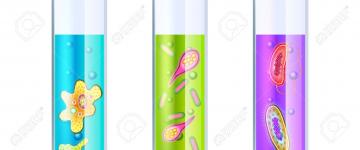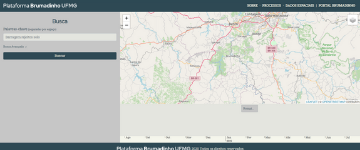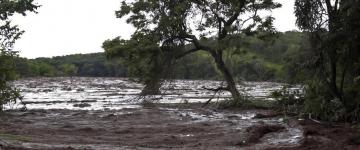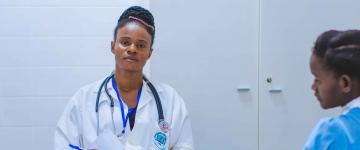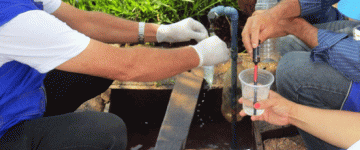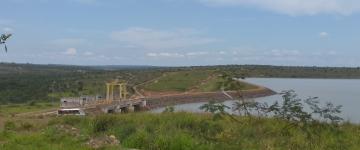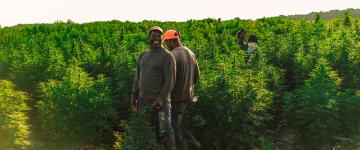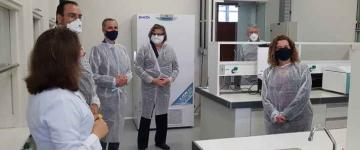Subjects
Ecotoxicology in Water Quality Monitoring and As a Tool for Environmental Forensics
Understand more about ecotoxicology
Published on 11/20/2020
< Ecotoxicological analyses of surface waters allow the prediction, detection, qualification and quantification of the acute and/or chronic effect(s) caused by a sample to test organisms. Among the effects, or "endpoints", measured by the various ecotoxicological tests are: mortality, motility, endocrine disruption, change in growth rate or morphology, reproductive impairment, etc. (ADAMS; GREELEY, 2000; MARTINEZ-HARO et al., 2015; BOGER et al., 2016).
How will& surface water and sediment samples be collected?
Understand the 5 steps for performing the surface water and sediment collections in the Paraopeba River during the Brumadinho UFMG Project.
Published on 09/11/2020
Surface water and sediment collections will be performed at 44 points, following the sampling design of those specified in Calls no 09/2019 and 11/2019 of the Brumadinho UFMG Project. The sampling points are located in the Paraopeba River, Ferro-Carvão stream, and the Retiro Baixo HPP.
How does the Brumadinho Platform work?
Understand the three stages of the Platform's operation
Published on 06/11/2020
The Brumadinho Platform is responsible for gathering information about the judicial and extrajudicial processes related to the rupture of the Córrego do Feijão Mine dam in Brumadinho. Through the platform, the community can access information from all the research subprojects that make up the Brumadinho Project at UFMG. But how does it work?
It is possible to understand the operation of the Platform in three steps:
Disasters, Impacts and Damage - Understand a little more!
Published on 02/11/2020
A typology is a classification, a grouping by types: species, patterns, characteristics, forms, genera, classes, qualities, examples, models, etc.
In the case of the Brumadinho UFMG Project, a typology of impacts will be made, that is, a grouping by types of losses and damages that occurred due to the rupture of the Córrego do Feijão Mine Dam.
The various types of damage will be grouped into five categories that will serve to construct a typology of those affected:
7 signs of heavy metal poisoning in dogs and cats
Published 10/30/2020
You've probably heard about heavy metals and their harm to human health, but did you know that these substances can also harm your pets? Dogs, cats and other pets can also fall victim to this poisoning, which can lead to health problems and even death.
Assessing the health conditions of people in disaster contexts
Published on 10/29/2020
On January 25, 2019, one of the most serious disasters involving ore dams in the world occurred: the rupture of Dam I of the Córrego do Feijão Mine in Brumadinho (MG). All along the path traversed by the tailings slurry, homes, animal breeding areas, various plantations, and communities that base their survival on the use of existing environmental resources (rivers, soils, and forests) were directly affected. Human losses, as a direct consequence of the disaster, totaled 259 people and 11 people still remain missing, according to data updated by the Minas Gerais State Civil Defense on December 28, 2019.
Understand water quality monitoring and what it can indicate about your region
Published 10/29/2020
Brazil is the country that has the largest amount of fresh water in the world, concentrating, in its territory, about 12% of the existing total. This water, which is surface or underground, is distributed among rivers, aquifers and dams and is used, above all, to supply the population, irrigate crops and for the industrial sector. For this distribution to occur, however, there must be certain levels of water quality.
Importance of groundwater quality assessment in the region affected by the dam breach
Posted in 08/02/2021
During the mining process, the metals of interest are separated and the waste generated (disposal) is sometimes accumulated in the dams, potentiating the concentration of metals and metalloids, some of which are toxic.
Farmers, attention: science needs you!
Often, we have the impression that science is something that only happens inside laboratories and in universities, far from the reality of rural workers. However, local and traditional knowledge is very important for the success of science. Understand more about it!
Posted on 29/01/2020
Did you know that subproject 05 of the Brumadinho UFMG Project provides the hiring of bushmen and farmers, residents of the region, to assist in field activities? This participation will be essential for the opening of the linear transects (that is, the trails) through which the teams will have access to the workplace.
UFMG structures reference center for material analysis of the Brumadinho dam
Judge of TJMG visited the laboratory complex that was installed in the Department of Chemistry at UFMG with resources from judicial guarantees
Posted on 09/12/2020
Rector Sandra Regina Goulart Almeida and Judge Elton Pupo Nogueira, from the Court of Justice of Minas Gerais (TJMG), visited, this Monday, the 7th, the facilities of the Reference Center for Environmental Innovation (CRA), located in the Annex 3 from the Chemistry Department.
